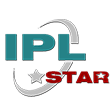03月04 Laser Skin Resurfacing: Top 8 Things You Need to Know
1.What is laser skin resurfacing?
Laser skin resurfacing is a proven way to help reduce wrinkles, age spots, acne scars, and other blemishes as well as tighten skin and balance tone. But precisely because lasers can do so much, and vary widely in how they act on your skin, it is hard to know where to start when researching treatment—even the most perfunctory search reveals a slew of competing devices and methods.
2. When should I have laser skin resurfacing?
Did you know that autumn is considered “laser season”? Because laser-treated skin is hypersensitive to sun exposure for up to a year following some procedures, many cosmetic surgeons recommend undergoing laser resurfacing during fall or winter months, when daytime hours are shorter and you are spending most of your time indoors.
Regardless of what time of year you have your laser procedure, wear a broad-spectrum SPF 30 or higher sunscreen daily and reapply as needed. This not only helps to keep your results looking their best, it also provides protection against skin cancer and helps prevent additional premature aging.
3. Treatments may hurt—or it may not
Patients and doctors commonly compare the sensation felt during laser treatments to a rubber band snapping against the skin. However, what laser resurfacing feels like depends on the laser, the depth and area of treatment, and an individual’s tolerance for pain.
Deeper ablative (some outer layers of skin are removed) laser treatments may require local anesthetic injections or intravenous sedation to keep a patient comfortable. Examples of ablative lasers are CO2 lasers and Erbium YAG lasers.
Some non-ablative laser treatments (the laser passes through the skin without removing layers) cause little-to-no pain and require only a topical numbing cream to offset discomfort. Non-ablative lasers include pulsed-dye, ND: Yag, and Alexandrite lasers. Following the procedure, some degree of tenderness in the treatment area can be expected. Your provider will recommend safe ways to control discomfort after laser resurfacing when necessary.
4. Depending on the treatment, you may need some downtime
Although laser treatments are generally considered non-surgical, not all are downtime-free. Laser resurfacing recovery time varies depending on the type of laser used as well as an individual’s health and healing rate.
Non-ablative lasers often require no downtime at all, while ablative lasers can require a 2 to 3 week healing process, depending on depth, before the new skin has healed completely and final results are evident.
This does not mean you have to stay at home for a month; it just means that your skin will be raw, red and scab over as it heals. You may not feel comfortable in certain social situations, and you will need to modify your activities to avoid situations where infection is possible (swimming, gym workouts, etc.).
5. It makes a difference who performs your laser skin resurfacing treatments
In the hands of a highly trained, knowledgeable professional, laser resurfacing is a safe way to dramatically improve your skin’s appearance. In the hands of a poorly trained individual, lasers can be ineffective or even dangerous. Choose a laser resurfacing provider based on an individual’s experience, training, and qualification. Don’t make your pick based solely on who offers the best deal or has a brand name laser platform.
6.Minimal Downtime
Surgical procedures like facelift are effective but do require some downtime. Patients should expect to take a week or two off from work and normal activities. With facelift and other surgical options, the final results can take up to a year to become visible. Laser skin rejuvenation procedures typically do not require any downtime. The results from laser treatments are visible almost immediately after the procedure and continue to improve in the ensuing days and weeks.
7. Plan on having multiple treatments
While in some cases, a single laser treatment will take care of a patient’s concerns, most non-ablative lasers call for a series of treatments to produce the most satisfying results. This is a trade-off that comes with a no-downtime treatment, but once the treatment series is complete, results are long-lasting.
8.Cost Effective
Laser skin treatments come with no surgical, anesthesia or facility fees, unlike surgical procedures. Because of this, many patients find laser skin treatments a great and affordable option for rejuvenating the skin.
Want to know more? Please pay attention to future articles!
WhatsApp: +86




No Comments